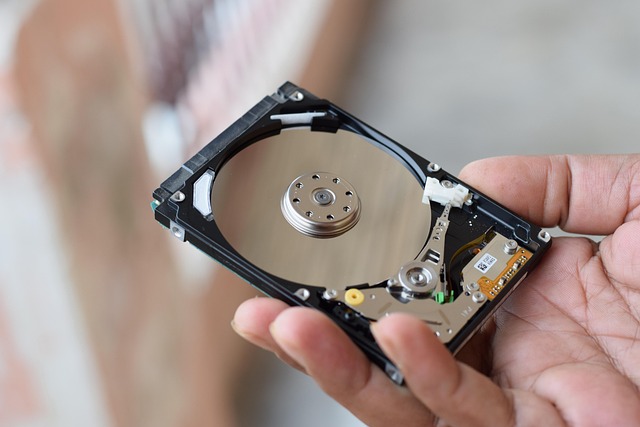Comparing Factory Reset and Secure Wipe Methods
This article compares factory reset and secure wipe methods for computers and electronics, outlining how each approach affects data removal, device lifecycle, and compliance. It explains practical steps for backup and diagnostics, and how choices influence refurbish, reuse, recycle, trade-in, and sustainability outcomes in local services or enterprise workflows.

Modern devices and hardware often pass through multiple hands during their lifecycle, and understanding the difference between a factory reset and a secure wipe helps protect data and meet recycling or trade-in requirements. A clear, factual view of both approaches clarifies when each is appropriate, what remains on storage media, and how backup, diagnostics, and repair practices fit into responsible reuse and disposal.
How factory resets affect devices and hardware
A factory reset restores a device to its original software state by removing user-installed apps and settings, but it does not guarantee that all data is unrecoverable. On many gadgets, especially those with solid-state drives or encrypted storage, a factory reset may only delete pointers to files rather than overwriting the underlying sectors. For devices that support hardware-level encryption, a factory reset combined with proper key destruction can be effective; on unencrypted drives, however, specialized recovery tools can sometimes retrieve information. For hardware being prepared for refurbish or tradein, a factory reset is often a first step but usually not sufficient alone for sensitive data.
What secure wipes do to data and security
Secure wipe methods aim to make data unrecoverable by overwriting storage with patterns, using cryptographic erasure, or leveraging built-in secure erase commands on drives. For magnetic drives, multiple overwrite passes have been traditional; for modern NAND flash and SSDs, using the drive’s secure erase or a verified cryptographic erase is generally recommended because conventional overwrites may not reach all physical blocks. Secure wipes directly address data security and are important when compliance and privacy policies require demonstrable data destruction. Proper verification after a wipe and documenting the process are part of solid data security hygiene.
When to refurbish, reuse, or recycle gadgets
Decisions about refurbish, reuse, or recycle depend on device condition, economic value, and environmental considerations. Devices destined for reuse or refurbish typically require thorough diagnostics, repair of faulty components, secure data removal, and functional testing. For recycling, secure data destruction remains necessary even if the device will be dismantled, because storage components may still contain retrievable data. Tradein programs and local services often set their own requirements for data removal; consumers and organizations should align device handling with sustainability goals while ensuring that data is not inadvertently exposed during transfer or refurbishment.
Role of diagnostics and repair in lifecycle management
Diagnostics and repair are integral to maximizing the useful life of electronics and reducing waste. Before performing a secure wipe or factory reset, running diagnostics can identify failing hardware that might compromise a wipe’s effectiveness—such as bad sectors or failing SSD controllers. Repair actions (battery replacement, component swaps) are often performed before refurbish to restore functional value for reuse or tradein. Documenting diagnostics results and repair history can support compliance and traceability, and helps determine whether a device should be wiped for reuse or securely erased before recycling or disposal.
Compliance and sustainability in device handling
Regulatory compliance and sustainability considerations shape the choice between factory reset and secure wipe. Data protection regulations may mandate verifiable data destruction for devices that contained personal or sensitive information. Organizations should map device lifecycle policies to compliance needs—keeping records of wipes, certificates of data destruction, and workflows for tradein or disposal. Sustainability goals favor repair and reuse over recycling when feasible, so using secure erase practices that enable safe refurbishment supports both environmental objectives and legal obligations.
Practical steps for backup, wipe, and post-wipe checks
Start with a verified backup of important data, confirming integrity before any reset or wipe. For consumer gadgets, create backups to cloud or external storage and ensure account removal and deactivation of device locks. When choosing a wipe method, consult the device’s documentation: use built-in secure erase for SSDs when available, and reputable utility tools for other media. After wiping, run validation tools or sampling checks to confirm data is unrecoverable, and keep records of the process. If refurbish or tradein is planned, combine diagnostics, repair, and verification to deliver devices that are both secure and functional.
In summary, a factory reset can be useful for general cleanup and preparing devices for casual handoff, but it does not guarantee permanent data removal. Secure wipe methods, when matched to the storage type and validated, provide stronger assurance for data security and compliance. Pairing the chosen wipe approach with proper backup, diagnostics, repair, and documentation supports responsible refurbish, reuse, recycle, and trade-in practices while aligning with sustainability and lifecycle management goals.





